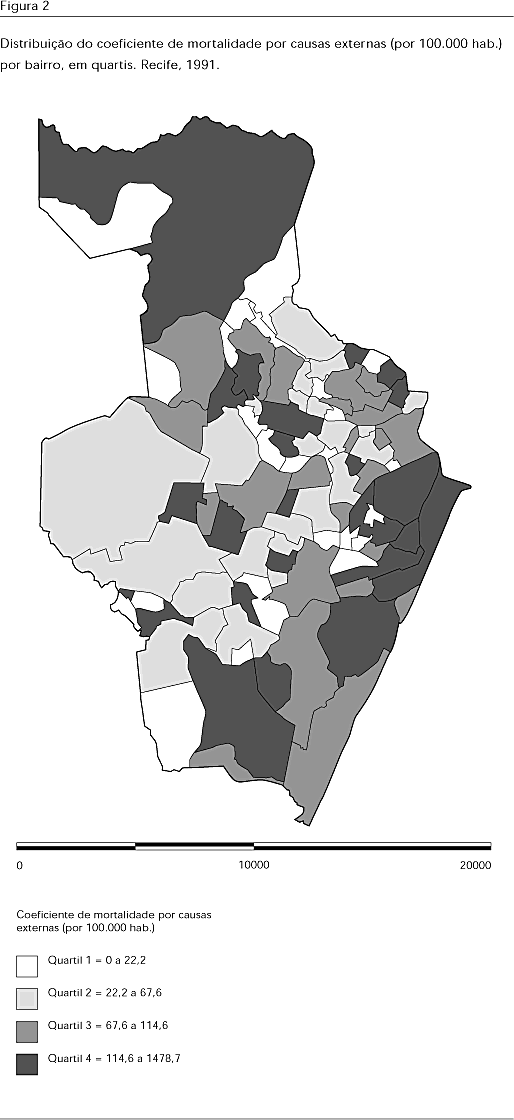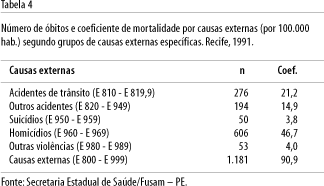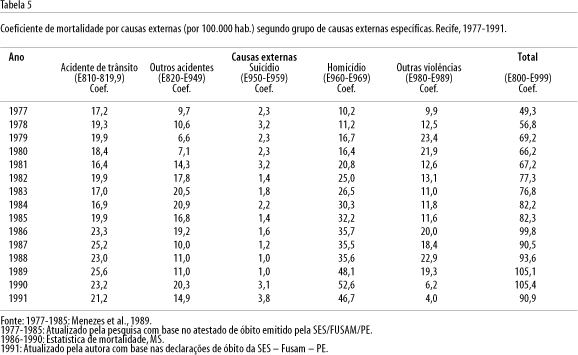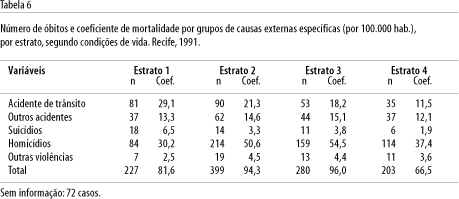This study aimed to describe the amount of (and trends in) violent deaths in the city of Recife, Pernambuco, Brazil, and to analyze their determinants. The article presents the spatial distribution of these deaths for the year 1991 and the differences regarding sex, age, and place of occurrence. It also analyzes the potential role of a series of socioeconomic factors, used as indicators of the population's living conditions. An exploratory ecological study was conducted to compare various groups. In 1991 there were a total of 1181 violent deaths in Recife. The study points to an overall mortality rate from external causes of 90.9/100,000 inhabitants. The two age groups 10-39 years and 60 years and over were those at highest risk of death. Males showed excess mortality in all age groups. The most important specific causes of death were homicides and traffic accidents, with 51.3% and 23.4%, respectively, of all violent deaths. The authors discuss the differences in the mortality rate from external causes in different social areas, defined according to living conditions and their relationship to the history of the development of Recife.
Mortality; External Causes; Spatial Analysis










